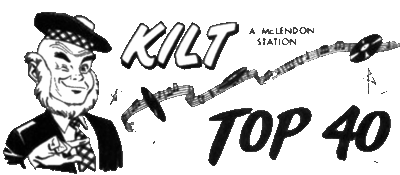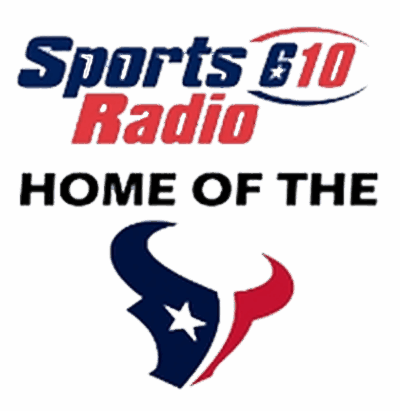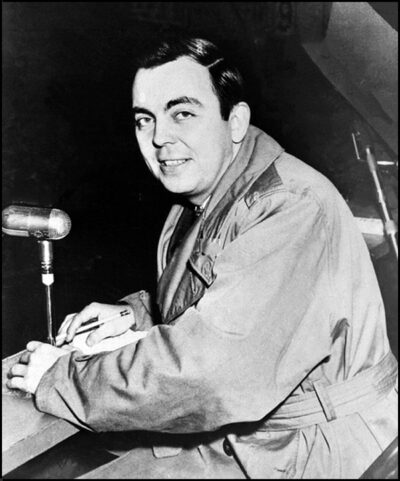KILT’s Origin Story: McLendon’s Vision and Birth of a Radio Powerhouse In the postwar boom of the late 1940s, Houston was a city on the rise—it
KILT’s Origin Story: McLendon’s Vision and Birth of a Radio Powerhouse
In the postwar boom of the late 1940s, Houston was a city on the rise—its skyline growing, its population surging, and its appetite for media expanding. Into this fertile ground stepped W. Albert Lee, a hotelier with a vision. On January 31, 1948, Lee launched KLEE-AM 610, broadcasting from studios inside his Milby Hotel. It was Houston’s fourth radio station, and it quickly made waves. Lee even ventured into television, founding KLEE-TV, the city’s first TV station, in 1949.
But Lee’s radio ambitions were short-lived. After selling the TV station to the Hobby family (owners of the Houston Post), he retained the radio station until his death in 1951. That’s when the story truly begins.
 Enter Gordon McLendon, a man often called the “Old Scotsman” and one of the most influential figures in American radio history. In 1952, McLendon purchased KLEE-AM and rebranded it as KLBS, aligning it with his Liberty Broadcasting System, a network known for its innovative sports coverage and dramatic flair.
Enter Gordon McLendon, a man often called the “Old Scotsman” and one of the most influential figures in American radio history. In 1952, McLendon purchased KLEE-AM and rebranded it as KLBS, aligning it with his Liberty Broadcasting System, a network known for its innovative sports coverage and dramatic flair.
McLendon had already revolutionized radio in Dallas with KLIF, a station that pioneered the Top 40 format—a tightly curated playlist of hit songs, delivered with high energy, personality-driven DJs, and relentless promotion. In 1957, McLendon brought that same magic to Houston, renaming KLBS as KILT-AM. The call letters were a nod to his nickname, “The Old Scotsman,” and the station’s identity was born.
KILT wasn’t just another station—it was a cultural phenomenon. With its 5,000-watt signal, it blanketed Houston in rock ’n’ roll, pop, and soul. Its DJs were stars, its jingles unforgettable, and its contests legendary. McLendon understood that radio wasn’t just about sound—it was about emotion, theater, and connection.
From its brick building and four in-line towers on West Road at Ella Boulevard—still in use today—KILT began broadcasting a new kind of energy into Houston’s homes, cars, and transistor radios.
The Thunder Rolls: KILT’s Top 40 Glory and Cultural Spark
By the 1960s, KILT-AM had settled into its skin as Houston’s premier Top 40 station. McLendon’s formula crackled through the airwaves: fast-paced presentation, tight playlists of chart-toppers, and DJs with magnetic personalities. Houstonians didn’t just tune in—they lived with KILT as the soundtrack of school dances, cruising down Westheimer, and heartbreak recoveries under the glow of neon signs.
One of McLendon’s core strategies was to make radio feel intimate and immediate. KILT ran high-energy contests that felt like community rituals. Listeners scrambled to win everything from concert tickets to crazy giveaways like “cash in your dash”—promotions that made radio interactive long before social media existed.
Icons Behind the Mic
Names like Chuck Dunaway, Paul Berlin, and the duo Hudson & Harrigan became legends—not just for spinning hits but for creating characters. Hudson & Harrigan, in particular, became a beloved brand, with rotating talent playing the dynamic duo across decades. Listeners connected to their banter like old friends having coffee every morning.
Jingles from PAMS (Production, Advertising, and Music Service), the Dallas-based jingle house, added sonic sparkle to every segment. You didn’t just hear “KILT”—you felt it, in melodic chimes that promised excitement, relevance, and cool.
KILT 610 | PAMS Inc., Dallas | 1966-1967
Audio Digitally Remastered by USA Radio Museum
A Format That Stuck: KILT’s Top 40 Era and the Sound of Belonging
 KILT’s embrace of the Top 40 format wasn’t just a programming decision—it was a cultural act. In the 1960s and early ’70s, as Houston grew from a regional hub into a sprawling metropolis, KILT-AM became the city’s sonic glue. It didn’t merely play the hits—it curated a shared experience, stitching together neighborhoods, generations, and identities through sound.
KILT’s embrace of the Top 40 format wasn’t just a programming decision—it was a cultural act. In the 1960s and early ’70s, as Houston grew from a regional hub into a sprawling metropolis, KILT-AM became the city’s sonic glue. It didn’t merely play the hits—it curated a shared experience, stitching together neighborhoods, generations, and identities through sound.
When the Beatles invaded America, KILT was the portal. When Motown rose, it was the amplifier. From the psychedelic swirl of the late ’60s to the disco pulse of the ’70s, KILT documented not just musical milestones but emotional ones. It was where listeners first heard the songs that scored their first kiss, their first heartbreak, their first drive down Westheimer with the windows down. For many, KILT wasn’t just where they discovered a hit—it was where they felt it, deep in their bones.
By the early 1970s, KILT-AM had become an undisputed ratings leader, dominating Houston’s airwaves with a blend of energetic presentation, magnetic personalities, and signature promotions. DJs like Chuck Dunaway, Paul Berlin, and Hudson & Harrigan weren’t just voices—they were companions, entertainers, and local celebrities. The station’s jingles—bright, brassy, and unforgettable—became part of the city’s auditory landscape.
KILT’s success wasn’t built on formula—it was built on flavor. It understood Houston’s pulse and reflected it back with humor, heart, and high fidelity. Promotions like “cash in your dash” and “record races” weren’t just gimmicks—they were community rituals. The station’s reach spanned generations, creating a loyal audience that tuned in not just for music, but for belonging.
This was more than Top 40. This was cultural curation, emotional resonance, and the sound of a city growing into itself—with KILT as its soundtrack.
KILT 610 | | Houston, Texas | December 1968
Audio Digitally Remastered by USA Radio Museum
The Voices Behind the Dial: KILT’s Golden Era DJs
KILT-AM’s rise to prominence wasn’t just about format—it was about personality. The station’s success in the 1960s and 1970s was powered by a constellation of charismatic voices who didn’t just play the hits—they became them. These DJs were more than broadcasters; they were companions, entertainers, and cultural touchstones for a city in motion.
In the 1960s, KILT’s airwaves crackled with energy and rebellion. Russ Knight, known as “The Weird Beard,” brought theatrical flair and teen idol magnetism to the mic, turning late-night radio into a rite of passage. Chuck Dunaway delivered smooth, confident commentary that made every record feel like a revelation. Bill Young, both on-air and behind the scenes as program director, helped shape the station’s sonic identity. Jim Carolla added depth and versatility, while the original Hudson & Harrigan duo—Mac Hudson Roach and Paul Menard—introduced a comedic rhythm that would become a KILT hallmark.
As the station evolved into the 1970s, so did its voices. Jay Rogers brought warmth and intimacy to the overnight hours, while Steve Lundy and Roger Garrett energized daytime slots with charisma and connection. Beau Weaver, whose voice would later grace national television, added polish and poise. Kenny Miles, Colonel St. James, and Crash each brought their own flavor—whether theatrical, edgy, or electric. And in the mornings, Hudson & Harrigan returned in a new incarnation: Mark Stevens and Jim Pruett, whose sharp wit and satirical skits made them one of the most beloved duos in Houston radio history.
Together, these voices formed the emotional architecture of KILT’s golden era. They weren’t just spinning records—they were spinning stories, shaping memories, and giving Houston a reason to tune in, turn up, and feel connected.
KILT-FM: From Soft Sounds to Country Strong
While KILT-AM was blazing trails in Top 40, its FM counterpart—KILT-FM 100.3—was quietly finding its own voice. Originally launched as a beautiful music station, KILT-FM offered lush instrumentals and mellow programming, catering to a more relaxed audience. It was the kind of station you’d hear in waiting rooms, upscale lounges, or during late-night drives through the city’s quiet streets.
But by the early 1980s, the winds of change were blowing through Houston’s FM landscape. Country music was surging in popularity, and KILT-FM saw an opportunity to pivot. The station rebranded as “100.3 KILT – Houston’s Best Country”, embracing a format that resonated deeply with the region’s identity.
The Country Boom
 KILT-FM’s country era wasn’t just a format change—it was a cultural alignment. Houston, with its rodeo roots and Southern swagger, was primed for a station that celebrated twang, storytelling, and heartache. KILT-FM became a launchpad for artists like George Strait, Reba McEntire, Garth Brooks, and Alan Jackson, blending contemporary hits with classic country staples.
KILT-FM’s country era wasn’t just a format change—it was a cultural alignment. Houston, with its rodeo roots and Southern swagger, was primed for a station that celebrated twang, storytelling, and heartache. KILT-FM became a launchpad for artists like George Strait, Reba McEntire, Garth Brooks, and Alan Jackson, blending contemporary hits with classic country staples.
The station’s imaging was bold and unmistakable. From its “KILT Country” branding to its on-air personalities who felt like neighbors, KILT-FM built a loyal listener base that saw the station as part of their daily rhythm. Morning shows mixed humor with headlines, while afternoon drive-time kept the boots tapping and the spirits high.
Promotions and Community Connection
KILT-FM didn’t just play country—it lived it. The station became a fixture at the Houston Livestock Show and Rodeo, hosted live broadcasts from honky-tonks and festivals, and ran promotions that gave listeners front-row access to the genre’s biggest stars.
Its DJs were more than voices—they were ambassadors of the lifestyle. Whether it was a “Country Cash Call” contest or a listener appreciation barbecue, KILT-FM made sure its audience felt seen, heard, and celebrated.
Navigating the 1990s and Beyond
As the 1990s rolled in, KILT-FM continued to evolve, embracing new country while honoring its roots. The station weathered industry shifts, ownership changes, and the rise of digital media, but its core identity remained intact: authentic, local, and emotionally resonant.
Today, KILT-FM stands as one of Houston’s most enduring country stations, a testament to the power of format fidelity and community connection. Its playlists may have changed, but its heart beats with the same rhythm that first drew listeners in decades ago.
KILT-AM’s Bold Pivot: SportsRadio 610 and the Rise of Houston’s Sports Voice
As the 1990s unfolded, the radio landscape was shifting. FM had become the dominant force for music, and AM stations across the country were searching for new identities. For KILT-AM, the answer was bold and transformative: sports talk radio.
In 1995, KILT-AM officially flipped formats, leaving behind its music legacy to become SportsRadio 610—Houston’s first all-sports station. It was a daring move, but one that tapped into the city’s deep passion for athletics. From the Astros to the Rockets, and especially the newly formed Houston Texans, KILT-AM positioned itself as the heartbeat of Houston sports.
Building a New Identity
 The rebrand of KILT-AM into SportsRadio 610 wasn’t just a change in format—it was a seismic cultural shift. Music gave way to momentum, and playlists were replaced by passion. The station didn’t simply pivot to sports—it immersed itself in the emotional terrain of Houston’s athletic soul.
The rebrand of KILT-AM into SportsRadio 610 wasn’t just a change in format—it was a seismic cultural shift. Music gave way to momentum, and playlists were replaced by passion. The station didn’t simply pivot to sports—it immersed itself in the emotional terrain of Houston’s athletic soul.
Local hosts became the heartbeat of this new identity. John Lopez, Seth Payne, Sean Pendergast, and Clint Stoerner weren’t just broadcasters—they were Houstonians. They knew the rivalries, felt the heartbreaks, and spoke the language of the fans. Their voices carried more than stats; they carried stories, frustrations, and the kind of hope that only sports can ignite. Whether dissecting a controversial call or celebrating a last-minute win, they made listeners feel seen, heard, and understood.
Programming evolved into a dynamic, multi-layered experience. Morning drive shows blended humor, banter, and breaking news, giving commuters both insight and levity. Afternoons brought spirited debates that felt less like studio segments and more like barroom conversations among friends. Live coverage extended beyond the games themselves—press conferences, locker room reactions, and post-game analysis became part of the daily rhythm. And through call-in segments, listeners weren’t just passive consumers—they were active participants, shaping the narrative with their own voices and emotions.
This wasn’t just sports radio. It was community radio, built on loyalty, vulnerability, and shared experience. KILT-AM had found a new way to connect—not through melody, but through momentum. And in doing so, it became the city’s sports conscience, a place where fandom met fellowship.
The Texans Era
In 2002, KILT-AM became the flagship station of the Houston Texans, a partnership that elevated its status and solidified its role in the city’s sports ecosystem. Every Texans game was broadcast with passion and precision, and the station became a hub for pre-game hype, post-game analysis, and everything in between.
KILT-AM didn’t just cover the Texans—it helped build their identity. Fans turned to SportsRadio 610 for draft coverage, trade rumors, and emotional therapy after tough losses. The station became a community center for sports fans, where loyalty and frustration could coexist.
Technical Legacy
Despite its format changes, KILT-AM’s transmitter site on West Road at Ella Boulevard remained a constant. The same brick building and four in-line towers that launched KLEE in 1948 continued to beam out KILT’s signal, making it one of the most enduring physical presences in Houston radio history.
Legacy Across the Dial: KILT’s Enduring Spirit in Houston Radio
To speak of KILT is to speak of transformation, resilience, and the profound ability of local radio to reflect the soul of a city. Across decades and formats, KILT has remained more than a station—it has been a cultural compass, attuned not to fleeting trends but to the lived rhythms of Houston itself.
It began with Gordon McLendon, a visionary who saw radio not as static transmission but as dynamic theater. His daring Top 40 blueprint in the 1950s turned KILT-AM into a sonic playground, where hit records and charismatic DJs shaped the soundtrack of youth. The station didn’t just play music—it created moments, movements, and memories.
As Houston grew and diversified, so did KILT. The launch of KILT-FM brought a new chapter—one steeped in country roots and community connection. With its pivot in the early 1980s, KILT-FM became a voice for the rodeo crowd, the suburban families, and the Southern spirit that pulsed through the region. It wasn’t just about twang—it was about belonging.
Then came the bold reinvention of KILT-AM in 1995, when music gave way to momentum and the station became SportsRadio 610. This wasn’t a retreat—it was a rally. KILT-AM found new purpose in the roar of stadiums, the heartbreak of losses, and the joy of shared victories. It became the city’s sports conscience, where fans didn’t just listen—they participated, debated, and felt.
Through every shift, one truth remained: KILT evolved with its listeners, not away from them. It mirrored Houston’s growth, its grit, and its grace. Whether through vinyl grooves, country ballads, or quarterback controversies, KILT stayed present—always local, always real.
This is the legacy across the dial. This is KILT: a station that didn’t just survive change—it mastered it, and in doing so, became part of Houston’s cultural DNA.
Format Shifting, Soul Staying
What sets KILT apart isn’t just its adaptability—it’s the station’s unwavering emotional resonance. Each transformation wasn’t a departure, but a refinement, a deeper attunement to Houston’s evolving heartbeat.
In the 1960s, teen listeners found joyful rebellion in the rhythms of Chuck Dunaway’s playlists, dancing through adolescence with the radio as their soundtrack. By the 1980s, country fans tuned in for twang and warmth, hearing their everyday lives reflected in the songs that filled the airwaves. And when KILT-AM became SportsRadio 610, it gave voice to the gritty loyalty of Houston’s sports devotees—those who needed a place to vent, celebrate, and belong.
Through every shift, KILT found new ways to say: “We hear you. We’re with you.”
Cultural Anchor, Technical Testament
In a city that’s evolved from sprawling neighborhoods to a gleaming skyline, KILT has remained both a technical anchor and a cultural constant. Its original transmission site, quietly nestled near West Road, still stands as a sentinel of Houston’s broadcast history. The station’s jingles—preserved by collectors and nostalgia curators—continue to spark goosebumps, echoing the sonic signatures of decades past. And the emotional architecture of KILT lives on in the fan mail, the late-night calls, and the shared grief over lost legends that once filled its airwaves.
KILT’s story is also a museum’s story—memory preserved in modulation, connection translated through AM and FM waves.
Voices That Linger: The Sound of Trust, Wit, and Belonging
From the crackle of the earliest morning sign-ons to the soft fade of late-night closings, KILT’s microphones have carried more than sound—they’ve carried soul. Across decades and formats, the station’s voices didn’t just fill airtime; they filled lives. They became part of the daily rhythm, the emotional landscape, the trusted presence in kitchens, cars, and corner stores.
In the Top 40 era, Hudson & Harrigan redefined what morning radio could be. Their sharp, smart banter—equal parts comedy, commentary, and chemistry—became a ritual for countless Houstonians. They weren’t just funny; they were familiar. Their voices felt like old friends dropping by with a wink and a wisecrack, setting the tone for the day ahead.
When KILT-FM embraced country, the tone shifted—but the intimacy remained. Country hosts brought a neighborly cadence to the airwaves, speaking in rhythms that felt rooted in community. They didn’t sound like polished announcers—they sounded like the guy at the feed store, the woman at the diner, the friend who knew your favorite George Strait lyric by heart. Their warmth was authentic, and their presence was personal.
In the sports era, KILT-AM’s transformation into SportsRadio 610 introduced a new kind of voice—one that balanced critique with camaraderie. Hosts like Sean Pendergast, Seth Payne, and John Lopez didn’t just analyze—they empathized. They understood the stakes, the heartbreaks, and the joy of fandom. Their voices carried the tension of a fourth-quarter comeback, the sting of a missed opportunity, and the laughter that only shared loyalty can bring.
Though the names and formats have changed, the tone has remained unshaken. Always warm. Always local. Always real. KILT’s voices linger not because they were loud, but because they were true. They mirrored the city’s character—diverse, dynamic, and deeply connected.
In the end, it wasn’t just what they said. It was how they made listeners feel: heard, understood, and never alone.
_____________________
SIDEBAR | Ownership Legacy: KILT-AM 610
Current Owner: Audacy, Inc.
Headquarters: Philadelphia, PA
Ownership Since: 2017 (following CBS Radio’s merger with Entercom, later rebranded as Audacy)
About Audacy:
Audacy is one of the largest radio broadcasting companies in the U.S., operating over 230 stations nationwide. Known for its strong portfolio of sports, news, and music formats, Audacy continues to steward iconic stations like KILT-AM, preserving their local identity while integrating modern digital platforms.
KILT’s Role Today:
Under Audacy’s ownership, KILT-AM remains a cornerstone of Houston’s sports media landscape. Branded as SportsRadio 610, it serves as the flagship station for the Houston Texans and Houston Dynamo, blending live game coverage, expert analysis, and fan-driven talk radio.
_____________________
Closing Reflection: Radio as Resonance
 For Houston, KILT was never just a station—it was a companion. It rode shotgun through traffic jams and midnight drives, its signal cutting through thunderstorms and silence alike. It blared from backyard barbecues, soundtracking joy and togetherness, and it whispered through heartbreaks, offering comfort in the quiet. Whether spinning Top 40 hits, crooning country ballads, or dissecting game-day drama, KILT was always there—present in the ordinary and the extraordinary.
For Houston, KILT was never just a station—it was a companion. It rode shotgun through traffic jams and midnight drives, its signal cutting through thunderstorms and silence alike. It blared from backyard barbecues, soundtracking joy and togetherness, and it whispered through heartbreaks, offering comfort in the quiet. Whether spinning Top 40 hits, crooning country ballads, or dissecting game-day drama, KILT was always there—present in the ordinary and the extraordinary.
Its formats may have shifted, but its purpose never wavered: to connect, to reflect, to resonate. KILT is more than a set of call letters—a signal that still pulses through the heart of Houston, echoing KILT’s spirit across the dial today.
“I didn’t just hear KILT—I felt it. It was the sound of my youth, my hometown, my life.”
—Charles Vanderhouser, a long-time KILT listener, Houston, TX
_____________________
A USARM Viewing Tip: On your PC? Mouse/click over each image for expanded views. On your mobile or tablet device? Finger-tap all the above images inside the post and stretch image across your device’s screen for LARGEST digitized view. Then click your brower’s back arrow to return to the featured post.



And what about KILT-FM Jim who they belong to now?